Ringling Museum of Art
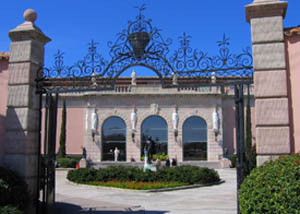
A visit to Sarasota would not be complete without a visit to the John and Mabel Ringling museum of Classical Art. Many of you are familiar with the Ringling Bros., Barnum & Bailey Circus, hailed as “The Greatest Show on Earth,” and if you were like me, you could not wait to see this grand performance as a child.
Sarasota was the winter home for many of the Ringling family, dating back to 1911. Alf T. Ringling and his family settled in the Whitfield Estates area with extensive land holdings. The families of Charles and John Ringling followed, living farther to the south. Soon, children and members of the extended family increased the presence of the Ringling family in Sarasota. Ringling Brothers Circus established its winter home in Sarasota during 1919 following the death of Alf T., when Charles Ringling assumed many of his duties.
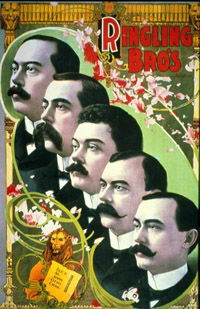
In 1925, John Ringling engaged architect John H. Phillips to design the art museum. The Museum was established in 1927 as the legacy of Mable and John Ringling for the people of Florida. Construction also began in 1927, but was slowed almost immediately by the collapse of Florida’s land boom and later, Wall Street’s stock market crash. Financial misfortune and Mable’s death in 1929 might have ended the dream, but John Ringling instead gained a new resolve to complete the museum, borrowing money as needed, knowing that it would perpetuate the memory of his beloved Mable. In October 1931, “The John and Mable Ringling Museum of Art” was officially opened to the public.
The Museum Today
Designated as the official state art museum for Florida, the institution offers twenty-one galleries of European paintings as well as Cypriot antiquities and Asian, American, and contemporary art. The museum’s art collection currently consists of more than 10,000 objects that include a wide variety of paintings, sculpture, drawings, prints, photographs, and decorative arts from ancient through contemporary periods and from around the world.
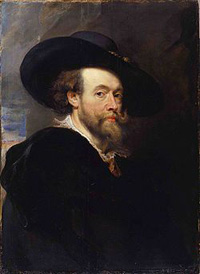
The most prized items in the museum are sixteenth, seventeenth, and eighteenth century European paintings, including an amazing collection of paintings from the world renowned Peter Paul Rubens. Other artists works that are represented include; Marrioto di Cione, Cranach the Elder, Frans Hals, H. C. Van Vliet, Wright of Derby, Gainesborough, and Boudin.
The Courtyard of the Museum of Art features casts of original antiquities and renaissance sculptures, including the towering David by Michelangelo. The Courtyard features two fountains – Fountain of Tortoises, one of three replicas from the Piazza Mattei in Rome, and the Oceanus Fountain, copied from the 16th century original by Giovanni Bologna in Florence’s Boboli Gardens.
Special Exhibitions
The museum sees many exhibitions from around the world that you certainy would not want to miss. Two recent exhibitions that ran through January 2011 was a showing of Renaissance tapestries from the Kunsthistorisches Museum, Vienna Austria and Splendid Treasures of the Turkomen Tribes from Central Asia. An exhibition that features Asian export ceramics opens in February 11th. 2011
Renaissance Tapestries
World-renowned for its artistic treasures, the Kunsthistorisches Museum in Vienna, Austria, houses the art collections formed over centuries by successive generations of the House of Hapsburg, Austria’s royal family. The tapestry collection of the Kunsthistorisches Museum is widely known as one of the greatest in existence.

In the late Middle Ages, Renaissance, and Baroque periods, tapestries were among the most prestigious objects owned by the European elite, their cost surpassing that of sculptures or paintings. Richly woven with silk, wool, and gold and silver threads, the eight tapestries from the Kunsthistorisches Museum in this exhibition were made at the height of the Renaissance in the famous Brussels atelier of Frans Geubels. They depict one of the most popular secular themes in the sixteenth-century repertoire of Flemish tapestry production: the legendary founding of ancient Rome by the twins, Romulus and Remus. The Hapsburgs who owned these tapestries ruled over the Holy Roman Empire, thought to be a revival of the ancient Roman Empire: the images on the tapestries proclaimed this glorious ancestry.
Six of the eight tapestries presented in this exhibition are part of a set once owned by the Emperor Matthias (1557–1617). Completing the sequence of the legend are two tapestries from another sixteenth-century set in the Kunsthistorisches Museum’s collection that belonged to the Emperor Franz I (1708–1765), husband of Empress Maria Theresia (1717–1780). All of the tapestries were recently and painstakingly restored.
Turkomen Treasures
The Central Asian landscape can be bleak and harsh, but the lives of the Turkomen tribes who inhabit the region are enriched by their skill at creating sophisticated and elaborate jewelry. Splendid Treasures of Turkomen Tribes, an exhibition of recent gifts to the Museum, features objects created in the late 19th to early 20th centuries, focusing on the important milestones and rhythms of daily life of these semi-nomadic people.
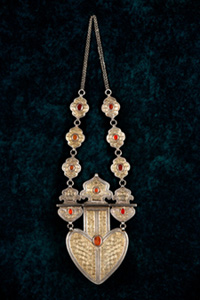
With social and economic needs to move with the seasons, wealth had to be portable, and so jewelry came to play an important role. These objects provide a unique window into the extraordinary decorative and spiritual elements of these tribes and their pastoral lifestyles. The jewelry, fashioned by Turkomen artists, was created from precious metals such as silver and gold and featured intricate forms and patterns ornamented with semi-precious stones.
Reflecting tribal identity and their beliefs regarding time and space and heaven and earth, the geometric shapes and elaborate curved forms capture the cosmos, express desires for safety and continuity, and echo the relationship of the tribal people to their unique physical and cultural environment.
Asian Export Ceramics
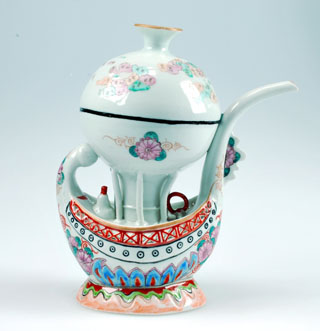
Originally created for the domestic market, Asian ceramics have been immensely popular with collectors world-wide. The advancements in transportation in the 15th century saw the arrival of these art forms into Europe and later on to the Americas and Middle East.
So popular were the ceramics that and industries in Thailand, Japan, Vietnam, and China were built specifically to meet the demand.
The combination of indigenous traditions and borrowed designs, a cross cultural exchange of ideas are represented in many of the pieces that are still created today.
Opens February 11th, 2011, this exhibition will display some of the most amazing and vividly colored of these designs.
I am confident you will find your visit to the Ringling Museum of art to be nothing short of inspiring. As one of Americas largest public displays of classical art, the museum is a must see attraction in the Sarasota area.
Contact Christina Miller
You can contact me by either:
Phone: 941-713-2340
Skype: "sarasotabay"
By Email:
Christina Miller
Sarasota Bay Real Estate
2033 Main Street Suite 104
Sarasota, Florida
34237
- Christina Miller, Broker and Owner of Sarasota Bay Real Estate, 2033 Main Street Suite 104, Sarasota Florida, 34237 - Direct line: (941) 713-2340
